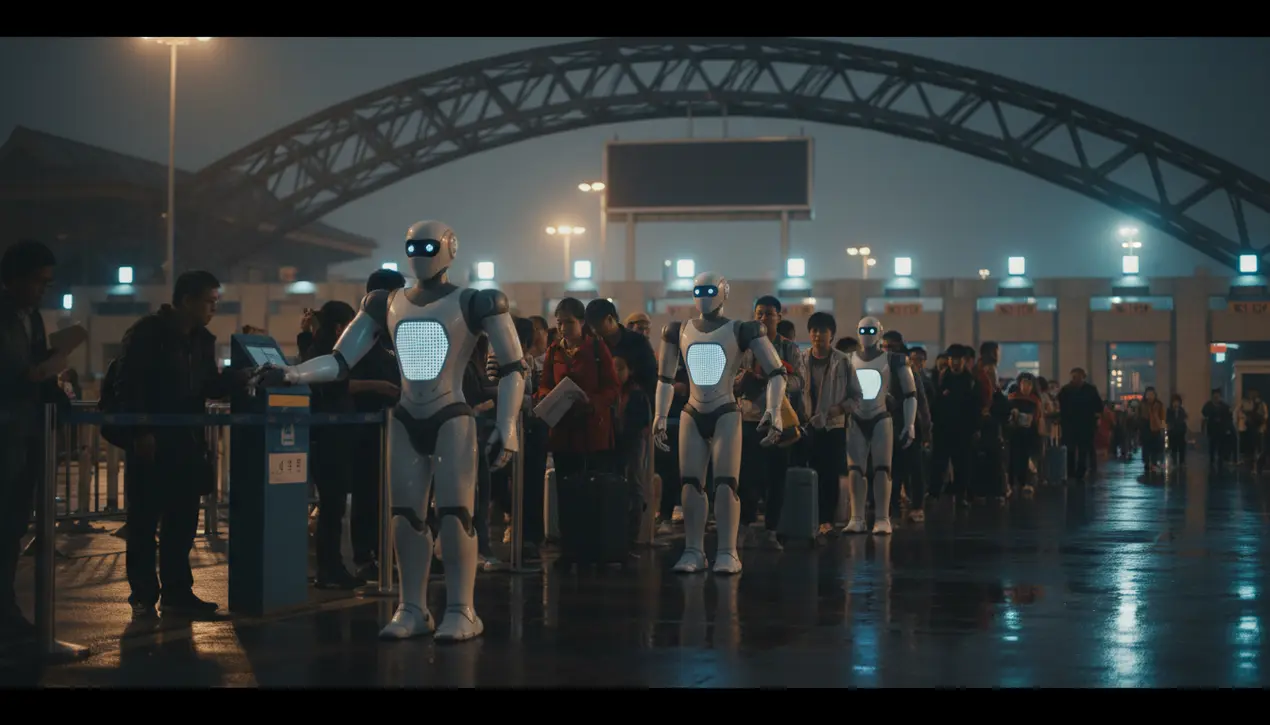
AIroboticsHumanoid Robots
UBTech Robots to Patrol China-Vietnam Border Crossings.
MI
Michael Ross
11 hours ago7 min read4 comments
In a development that reads like a page from an Isaac Asimov novel, UBTech Robotics has secured a landmark 264 million yuan (US$37 million) contract to deploy its humanoid robots at border crossings along the China-Vietnam frontier, specifically in the coastal city of Fangchenggang within the Guangxi Zhuang Autonomous Region. This isn't merely an incremental upgrade to existing automation; it represents a profound leap into applying advanced robotics in one of the most complex, high-stakes environments imaginable.The stated tasks for these machines—guiding travelers, conducting inspections, and handling logistics—sound benign, almost like next-generation customer service. But peel back the layers, and you find a real-world testbed for the ethical and policy dilemmas that have long been the domain of science fiction.The border, a place defined by sovereignty, security, and human movement, is now becoming a laboratory for human-robot interaction on a grand scale. UBTech, a titan in China's ambitious push for technological self-sufficiency, is positioning its humanoids not as replacements, but as force multipliers.Imagine a scenario where a robot, equipped with advanced sensors and facial recognition software far beyond human capability, can seamlessly process a traveler's documents while simultaneously running a security check against international databases. The efficiency gains are undeniable, potentially reducing queues and streamlining the flow of goods and people.Yet, this very capability forces us to confront Asimov's First Law of Robotics in a geopolitical context: how does a robot's programming reconcile its duty to not harm humanity with the stringent, and sometimes harsh, imperatives of border enforcement? The deployment in Fangchenggang is a strategic masterstroke, placing these AI-driven agents at a critical node in the Belt and Road Initiative, a conduit for trade between China and Southeast Asia. The data collected here on movement patterns, logistical bottlenecks, and security threats will be invaluable, fueling iterative improvements that could see this model exported globally.However, this data-centric approach raises immediate concerns about privacy and mass surveillance. Will the biometric data of every traveler be stored, analyzed, and potentially shared? The contract's details remain opaque, a common theme in the rollout of state-aligned AI.Experts in international law are already pondering the ramifications. Dr.Alena Schmidt, a governance fellow at the Center for AI Policy, notes, 'When an automated system makes a decision that denies entry or flags an individual for secondary screening, the chain of accountability becomes blurred. Is it the programmer in Shenzhen, the algorithm itself, or the border agency official overseeing the operation? We are creating a new class of administrative actors without a clear legal framework.' This move by China accelerates a global arms race in border tech, likely pressuring neighboring nations and rivals like the United States to fast-track their own automated systems, potentially leading to a future where AI-powered checkpoints are the global norm. The promise is a world of frictionless travel and enhanced security; the peril is a normalization of pervasive, unblinking digital oversight. The robots patrolling the China-Vietnam border are more than just machines; they are the vanguard of a new, automated sovereignty, and their silent, efficient operation will force the world to answer difficult questions about the future of freedom, security, and the role of artificial intelligence in governing our most fundamental human boundaries.
#UBTech
#humanoid robots
#border patrol
#China-Vietnam border
#logistics
#inspections
#featured
Stay Informed. Act Smarter.
Get weekly highlights, major headlines, and expert insights — then put your knowledge to work in our live prediction markets.
Related News
Comments
Loading comments...
© 2025 Outpoll Service LTD. All rights reserved.